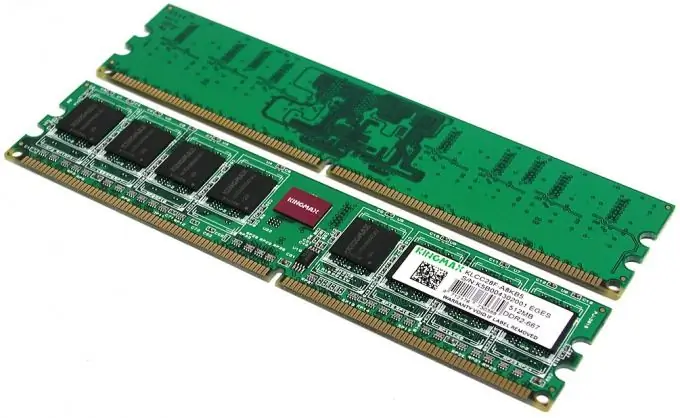Once upon a time, Bill Gates said that 640 kilobytes should be enough for everyone, but unfortunately, these days have already sunk into oblivion. Now another expression is in use: "There is never too much memory." Therefore, the question of increasing the RAM in the PC remains open.

Instructions
Step 1
First of all, you need to find out how much memory you have and decide on how much you want to add. The amount of memory can be viewed by right-clicking on the "My Computer" icon in Windows and selecting the "Properties" line. The size of the RAM will be indicated there. You can also see its size when you turn on the computer, when it is being counted.
Step 2
Now you need to find out what type of RAM you need. You can find out by looking at the instructions for the motherboard. If there are no instructions for any reason, you can download and install some diagnostic program such as Si Soft Sandra, Aida or Everest, or you can do it easier.
Step 3
Turn off your computer and unplug the power. Open the lid of the system unit and find the memory sticks on the motherboard (similar modules are shown in the photo). At the same time, see how many free memory slots you have left. Now carefully remove the memory stick from the slot. In order to do this, it is necessary to part the plastic clips along the edges of the strip. After that, you need to take it from both ends and pull it towards you. If the clamps are pulled back a sufficient distance, the module will easily come out; if not, try spreading the clamps wider.
Step 4
Now you need to go to the nearest computer store and show the memory to the seller. He will determine its type and offer you the same. It is recommended to install modern memory in a computer in pairs, i.e. if you need another gigabyte, then take two 512 MB modules, if 2 GB, then two 1 GB modules (if there are free slots, of course), etc. If there are no free slots at all, but memory is needed, then the memory modules will need to be replaced with larger ones.
Step 5
Another memory parameter is its frequency. It is desirable that the memory frequencies coincide - this will save you from various problems that may arise. If the frequencies are different, the entire memory will operate at the frequency of the slowest module, so sometimes it makes sense to just get rid of old, small and slow memory sticks and replace them with faster ones.
Step 6
After purchase, you will need to put the memory back into your computer. This is done in reverse order. First, the strip is inserted into the slot (do not confuse or put it on the other side - there is a cut on the contact pad of the module, which must coincide with the projection on the slot), and then snaps into place on both sides with latches.
Step 7
Now assemble your computer and turn it on. The new memory will be detected automatically and if you did everything according to the instructions, then its volume will increase.






